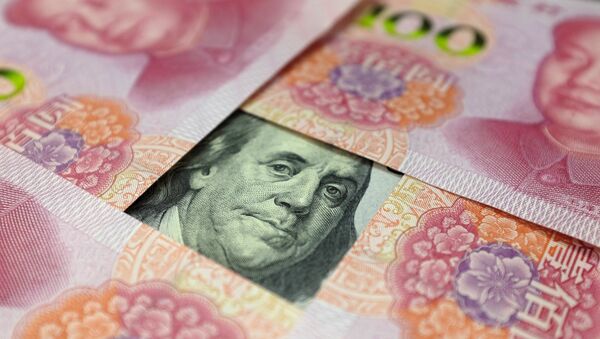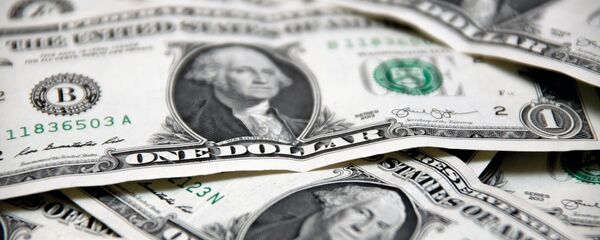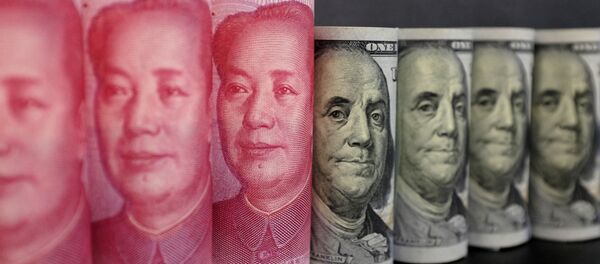Kristian Rouz — Ahead of the Chinese Communist Party Congress, China's policymakers are providing upbeat assessments of the economy, with the outlook remaining fairly bright despite the slowdown of the recent years. Such an outlook is to a significant extent attributable to China's monetary regime in regards to its national currency, the renminbi, and its managed FX rate against the dollar.
The People's Bank of China (PBoC) has managed the renminbi-dollar exchange rate in order to have a tighter grip on capital flows in and out of mainland China, and whilst both the US and the IMF have repeatedly called for greater openness and transparency in its monetary regime, Beijing's steps in this direction have been cautious and gradual.
On the other hand, part of mainland China's policymakers have advocated for the complete de-dollarization of the economy, using the renminbi instead as the means for the mainland's international payments.
Whilst elements of this framework have been partially implemented in China's foreign trade in raw materials and energy, Beijing is not coherently seeking to abandon the dollar altogether — as the current situation is still deemed beneficial to China.
Mainland China's economic expansion after the global economic crisis of 2009 has been largely driven by the expansion in corporate and provincial debt guaranteed by the central government, whilst at the same time, Beijing has continued their purchases of US Treasury bonds. This has allowed China to effectively drive its GDP growth without the risks of a sovereign default, as gains in US Treasury note value and China's massive foreign trade surplus have both allowed it to offset debt concerns.
At the same time, currency manipulations and controlled devaluations of the renminbi have allowed mainland China to support the competitiveness of its exports in the international markets by adjusting the correlation between its factory input and factory-gate costs.
However, the slowdown in Chinese economic expansion in recent years has reflected the mounting setbacks of such a growth model.
"China has benefited immeasurably from our policy of reform and opening up. We also recognize that our country's future is tied to the stability and well-being of the world," Mainland China's ambassador to the US Cui Tiankai wrote. "Over the past five years, we have turned these ideas into structural reform, economic growth and tangible institutions. China is furthering its economic transition with significant supply-side reform."
The Chinese authorities have been increasingly responsive to the calls from the IMF and the US to open up its economy to foreign investment, loosen its tight capital controls and abandon its currency manipulations mainly because China remains heavily reliant on the external consumer markets.
Despite the limited success on the path of rebalancing its growth model toward a greater reliance on domestic consumers, China is still an export-driven economy. Facing the Trump administration's calls for a 35-percent imports tariff on the Chinese goods unless Beijing is ready to reconsider its ways, Beijing is sending cautious signals of its willingness to cooperate.
Mainland China's economic growth accelerated to 6.9 percent in the first two quarters of this year compared to the previous target of 6.5 percent, mostly due to the accelerated economic growth and improved consumer confidence overseas.
Although this is still below the 7-8-percent growth necessary for China to offset its demographic pressures, the nation is still on track to achieve the Communist Party's 2012 goal of doubling its GDP and average per capita income by 2020.
These achievements would not be possible without the renminbi's de-facto floating peg to the US dollar, and the ideas of de-dollarization remain merely a piece of belligerent rhetoric within the mainland. Beijing policymakers realize that unless supply-side reform is fully accomplished, de-dollarization remains largely hypothetical, as it would mean a significant decline in China's foreign trade.
The Beijing government expects Chinese exports to the US alone to increase to $520 billion by 2030, reflecting its commitment to maintaining the current bilateral trade ties.
This also suggests China is willing to negotiate and concede to President Trump's demands of fairer bilateral trade.



